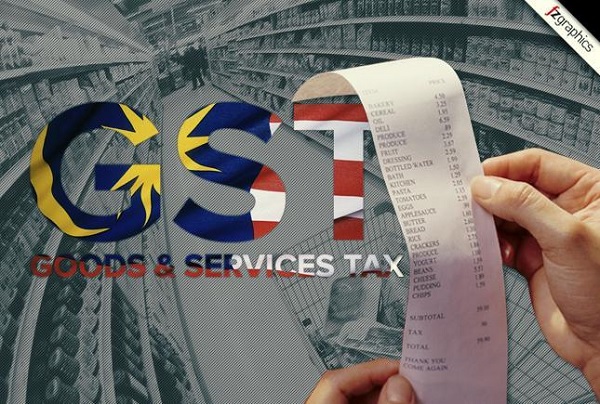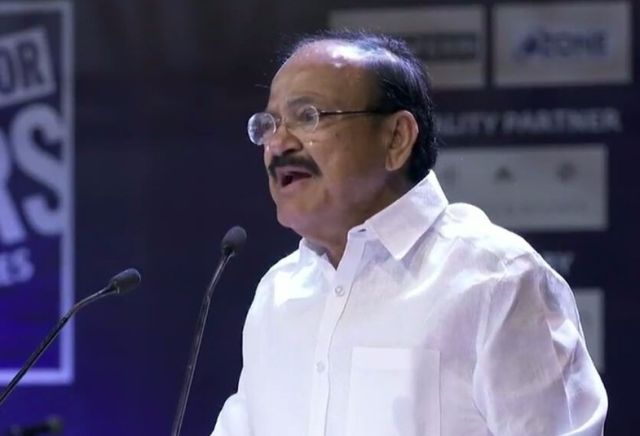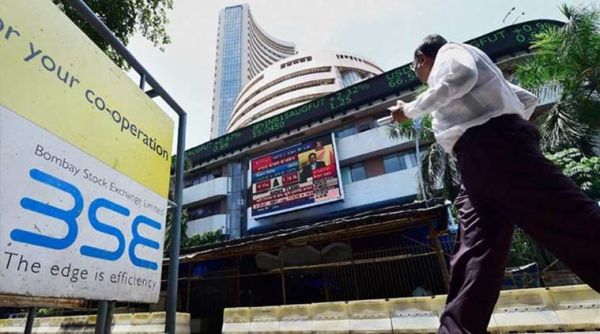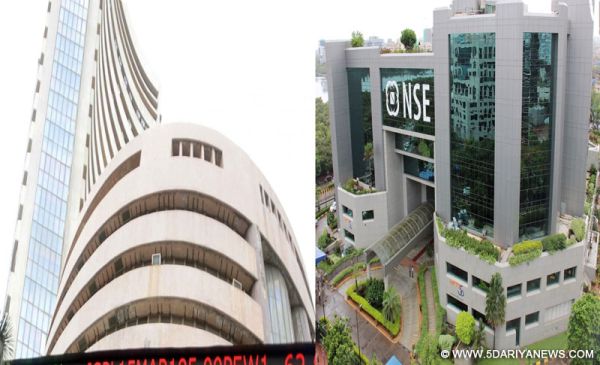
by admin | May 25, 2021 | Economy, Finance, News, Politics
 New Delhi : The introduction of Goods and Services Tax (GST) has established India as one of the major economic markets in the world by removing uncertainties in the countrys tax system, Prime Minister Narendra Modi said here on Friday.
New Delhi : The introduction of Goods and Services Tax (GST) has established India as one of the major economic markets in the world by removing uncertainties in the countrys tax system, Prime Minister Narendra Modi said here on Friday.
“Before 2014, India’s tax system was seen as unfriendly, unpredictable and non-transparent for the investors. But the situation is changing now. The GST has established India as one of the major economic markets in the world,” he said in his address at an event organised by the CNN-News18 TV network.
Modi said that In the last 3-4 years, India has lent strength to the world economic growth as well along with its own growth and pointed out that the country that is just three per cent of the world GDP is contributing “seven times more in the growth of world economy”.
“In the third quarter of 2017-18, India has achieved a growth rate of 7.2 per cent and economists say that this would further accelerate.
“India is performing well in all the macroeconomic parameters such as inflation, current account deficit, fiscal deficit, GDP growth, interest rates, foreign direct investment (FDI) inflow etc. The rating agencies are revising India’s ratings upward,” he said.
The Prime Minister said that while India is among top three prospective host economies, in the FDI confidence index, it is being counted among top two emerging market performers.
In the last three years, the country has improved by 42 points in the World Bank’s ‘Ease of Doing Business’ index, he said.
Modi said that India has started getting membership of the bodies it had been seeking for decades such as the Missile Technology Control Regime (MTCR), The Wassenaar Arrangement (on Export Controls for Conventional Arms and Dual-Use Goods and Technologies) and the Australia group.
India’s influence has been rising internationally and that in the last 3-4 years, his government has worked meticulously to achieve this, he said.
He said that India winning elections at the International Tribunal for Law of the Sea, the International Maritime Organization, UNESCO and the International Court of Justice shows India’s rising influence.
Modi said India has at various big international fora including the United Nations and the G-20 vehemently raised issues which affect the whole world such as climate change, terrorism and black money.
He said that India has given a new direction not just to its own development but also to that of the entire world. India is leading the world in solar energy revolution.
“In Yemen crisis, other nations also sought India’s help to evacuate their citizens. We safely evacuated nationals of 48 countries from Yemen along with our own citizens,” Modi said.
He said that the growing popularity of yoga and ayurveda across the world was also an extension of Rising India.
“My government is working with a holistic approach keeping in mind the aspirations of the poor, lower middle class and the middle class citizens,” the Prime Minister said.
—IANS

by admin | May 25, 2021 | Banking, Economy, Finance, Markets, News
 New Delhi : India would grow at 7.3 per cent in 2018-19, the World Bank said on Wednesday forecasting that the economy would revert to its trend growth rate of 7.5 per cent by 2019-20 as it bottoms out from the impact of the Goods and Services Tax (GST) and demonetisation.
New Delhi : India would grow at 7.3 per cent in 2018-19, the World Bank said on Wednesday forecasting that the economy would revert to its trend growth rate of 7.5 per cent by 2019-20 as it bottoms out from the impact of the Goods and Services Tax (GST) and demonetisation.
In the current year, the economy is expected to clock a growth rate of 6.7 per cent, said the World Bank’s India Development Update report, which takes stock of the Indian economy.
It said while India’s GDP growth saw a temporary dip in the last two quarters of 2016-17 and the first quarter of 2017-18 due to demonetization and disruptions surrounding the initial implementation of GST, but economic activity had begun to stabilize since August last year.
“While services will continue to remain the main driver of economic growth, industrial activity is poised to grow, with manufacturing expected to accelerate following the implementation of the GST, and agriculture will likely grow at its long-term average growth rate,” it said.
It added that reaching growth rates exceeding 8 per cent will require continued reform aimed at resolving issues related to credit and investment, and enhancing the competitiveness of India’s exporting sector.
“Maintaining hard-won macroeconomic stability, providing a definite and durable solution to the cleaning up of banks’ balance sheets, realising GST’s growth and fiscal dividend, and regaining momentum on the unfinished structural reform agenda will be key for realising these rates of growth,” it added.
“Accelerating the growth rate will also require continued integration into the global economy.”
According to the World Bank, India’s growth in recent years has been supported by “prudent macroeconomic policy” including a new inflation targeting framework, energy subsidy reforms, fiscal consolidation, higher quality of public expenditure and a stable balance of payment situation.
“In addition, recent policy reforms have helped India improve the business environment, ease inflows of foreign direct investment (FDI) and improve credit behaviour,” it added.
World Bank’s India Country Director Junaid Ahmad said India’s long-term growth has become more steady, stable, diversified and resilient.
“In the long-run, for higher growth to be sustainable and inclusive, India needs to use land and water, which are increasingly becoming scarce resources, more productively, make growth more inclusive, and strengthen its public sector to meet the challenges of a fast growing, globalizing and increasingly middle-class economy,” he added.
Poonam Gupta, the lead economist and the main author of the report, said that durable revival in private investments and exports would be crucial for India achieving a sustained high growth of 8 percent and above.
“This will require continued impetus for structural reforms. Resorting to countercyclical policies will not help spur sustained growth and India should not compromise its hard-earned fiscal discipline in order to accelerate growth,” she added.
The report recommended reforms in the fields of private investments, bank credit and exports.
—IANS

by admin | May 25, 2021 | Economy, News, Politics

Venkaiah Naidu
Visakhapatnam : Vice-President M. Venkaiah Naidu on Saturday said that the demonetisation and Goods and Services Tax (GST) have led to improvement in India’s fiscal prudence and expanded the formal economy and the tax base.
Terming them the boldest and revolutionary moves by the government, he said despite their short-term hiccups, they were yielding results and would give further boost to the economy in the long-term
Addressing the CII Partnership Summit, which began in this coastal city of Andhra Pradesh on Saturday, he told the delegates that the Indian economy was now back on track and is on course to achieve higher growth in the coming years.
He said the demonetisation brought the money, hitherto lying idle, into the banking system and resulted in bringing down the interest rates. “The banks have reduced lending rates from 9.5 to 10 per cent to 8.25 per cent. People have learnt fiscal prudence,” he said.
“Any tough reform will face teething problems in the initial stages and the same was the case with both demonetization and GST. However, the long-term advantages will definitely outweigh the short-term hiccups which caused a bit of economic slowdown. That period is over now and the economy is on the track to achieve a higher growth,” the Vice President said.
Naidu also claimed that the demonetisation streamlined the tax system and brought down tax evasion. “In a span of one year, more than 1.81 crore people were brought into the tax net additionally, taking the overall number of tax payers into 8.27 crore. The revenue flows into the government kitty are increasing sharply and you can see by next February, the exchequer would be flooded with tax revenues and there will be increase in the share of the states,” he said.
Outlining the major reforms initiated by the government in the last few years, he said that harmonization of indirect taxes through GST, easing the regulatory environment, facilitating foreign direct investment across all sectors, massive recapitalization of the public sector banks at Rs 2.11 lakh crore to improve credit growth and investment and the implementation of Insolvency and Bankruptcy Code had given a major push to the economy.
The FDI inflows had increased steadily from $45 billion in 2014-15 to touch $60 billion in 2016-17 while exports had been recovering steadily over the last several months and grew at over 12 per cent in the first three quarters of 2017-18, he pointed out.
Naidu said with simple taxation system, ideal investment climate, huge natural resources, hassle-free administration and abundant human resources, India is an ideal destination for global investments. “We have been following the concept of reform, perform and transform and it will provide the platform for the investors to put in their money in India and reap rich profits,” he said.
—IANS

by admin | May 25, 2021 | Economy, Markets, News
 By Porisma P. Gogoi,
By Porisma P. Gogoi,
Mumbai : Upbeat quarterly corporate earnings along with influx of foreign funds and major decisions undertaken by the government during the week catapulted the key Indian equity indices — the Sensex and the Nifty50 — to record high levels.
The benchmark indices extended their bull run for the seventh consecutive week with banking and IT stocks giving a major thrust to the upward trajectory, said market observers.
The barometer 30-scrip Sensitive Index (Sensex), which crossed the psychologically important 35,000-mark during the week, augmented by a substantial 919.19 points or 2.66 per cent to close at a fresh level of 35,511.58 points.
The wider Nifty50 of the National Stock Exchange (NSE) crossed the 10,900-points-level for the first time this week.
However, the Nifty50 failed to sustain that level at the closing on Friday. The index closed trade at a fresh high of 10,894.70 points — up 213.45 points, or 2 per cent, from its previous week’s close.
The indices also touched their new 52-week highs. On Friday, the Sensex scaled a fresh intra-day high of 35,542.17 points and the Nifty50 of 10,906.85 points.
“The recent rally was undoubtedly dominated by the technology and banking space. The banking stocks got lured on Thursday after the news that the government is mulling allowing 100 per cent FDI (foreign direct investment) in the sector,” D.K. Aggarwal, Chairman and Managing Director of SMC Investments and Advisors, told IANS.
On the global front, stock markets across the globe rallied on the back of optimism in the US economy and expectations for a strong earnings season, Aggarwal said.
“Investors’ interest resumed in the market again after the Goods and Services Tax (GST) Council announced cut in the tax rate on 29 goods and 54 categories of services,” Arpit Jain, AVP at Arihant Capital Markets, told IANS.
“Encouraging Q3 FY18 results by blue-chip firms like HDFC Bank and ITC added to the cheer,” he said.
In a major decision on Thursday, the GST Council slashed the rates on 54 services and 29 items, including old and used motor vehicles, public transport buses run on bio-fuel, sugar-boiled confectionery and packaged water, which cheered investors.
On the investment side, provisional figures from the stock exchanges showed that foreign institutional investors purchased scrips worth Rs 4,234.46 crore, while domestic institutional investors divested stocks worth Rs 698.65 crore during the week.
Figures from the National Securities Depository (NSDL) revealed that foreign portfolio investors bought equities worth Rs 3,596.2 crore, or $563.3 million, during January 15-19.
“The announcement of the Ministry of Finance that the government will reduce the additional borrowing of dated securities for FY18 to Rs 200 billion from Rs 500 billion that was earlier announced helped alleviate some of the uncertainty,” Shibani Kurian, Senior Vice President and Head of Equity Research, Kotak Mutual Fund, told IANS.
“The government has reassessed its additional borrowing requirements, taking note of revenue receipts and expenditure patterns,” added Kurian.
On the currency front, the rupee weakened by 22 paise to close at 63.85 against the US dollar from its last week’s close at 63.63.
“Sectorally, the top gainers were the Bank Nifty, IT, PSU banks and FMCG indices. The top losers were the realty, metal and energy indices,” Deepak Jasani, Head – Retail Research, HDFC Securities, told IANS.
The top weekly Sensex gainers were: ICICI Bank (up 11.32 per cent at Rs 353.55); HDFC (up 7.90 per cent at Rs 1,900.45); Tata Consultancy Services (up 6.56 per cent at Rs 2,954.75); Axis Bank (up 6.21 per cent at Rs 590.25); and Infosys (up 6.01 per cent at Rs 1,143.25).
The losers were: Coal India (down 7.65 per cent at Rs 284.45); Tata Motors (down 3.94 per cent at Rs 418.95); Tata Motors (DVR) (down 3.39 per cent at Rs 243.95); ONGC (down 3.32 per cent at Rs 193.60); and Hero MotoCorp (down 2.58 per cent at Rs 3,590.75).
(Porisma P. Gogoi can be contacted at porisma.g@ians.in)
—IANS

by admin | May 25, 2021 | Economy, Markets, News
 Mumbai : Extending gains for the third consecutive session, the key Indian equity indices on Friday zoomed to new highs, with the NSE Nifty50 crossing the psychologically important 10,900-mark for the first time.
Mumbai : Extending gains for the third consecutive session, the key Indian equity indices on Friday zoomed to new highs, with the NSE Nifty50 crossing the psychologically important 10,900-mark for the first time.
According to market observers, positive global cues, coupled with upbeat quarterly corporate earnings and healthy buying in banking stocks, gave momentum to the upward rally of the key indices.
In addition, the Goods and Services Tax (GST) Council’s decision on Thursday to slash the GST rate on 54 services and 29 items, including old and used motor vehicles, public transport buses run on bio-fuels, sugar-boiled confectionery and packaged water, cheered investors.
The wider Nifty50 of the National Stock Exchange (NSE) touched a record intra-day high of 10,906.85 points.
However, the Nifty50 failed to sustain the 10,900-mark and closed at a new high of 10,894.70 points — higher by 77.70 points, or 0.72 per cent, from its previous close.
On the BSE, the barometer 30-scrip Sensitive Index (Sensex) provisionally closed at a new high of 35,511.58 points — up 251.29 points or 0.71 per cent from its previous session’s close — after touching a fresh high of 35,542.17 points during intra-day trade.
In contrast, the BSE market breadth remained bearish as 1,506 stocks declined as compared to 1,393 advances.
“Markets surged higher in late afternoon trade to yet another new record high after opening on a negative note,” Deepak Jasani, Head – Retail Research, HDFC Securities, told IANS.
“Sentiments were boosted on the back of firmness in global markets and slashing the tax rate on 54 services and 29 items by the GST council in its latest meet and also the proposal for simplifying return filing process for businesses,” he added.
In the broader markets, the S&P BSE mid-cap index fell sharply to close higher by 0.77 per cent and the small-cap index by 0.88 per cent.
Vinod Nair, Head of Research, Geojit Financial Services, said: “The government’s decision to cut GST rate for a few more items and a good start to earnings season added energy in the market.
“The market is anticipating a sea change in the earnings with a growth of 15-20 per cent in PAT (profit after tax) led by revamp in businesses and low base effect. Moreover, positive trend in global market and drop in crude prices influenced buying pattern.”
On the currency front, the Indian rupee strengthened by three paise to close flat at 63.85 against the US dollar.
Provisional data with the exchanges showed that foreign institutional investors purchased scrips worth Rs 988.25 crore, and the domestic institutional investors worth Rs 209.86 crore.
“Markets ended with spectacular record highs and closed in green for the third straight time, led by financial stocks. Both indices posted their seventh consecutive weekly gains,” Dhruv Desai, Director and Chief Operating Officer of Tradebulls, told IANS.
All the 19 sub-indices of the BSE ended with gains. The S&P BSE banking index surged the most — up 456.01 points — followed by capital goods index by 183.62 points and metals index by 137.48 points.
Major Sensex gainers on Friday were: Adani Ports, up 4.68 per cent at Rs 433.75; Yes Bank, up 2.37 per cent at Rs 348.30; ICICI Bank, up 2.15 per cent at Rs 353.55; State Bank of India, up 2.08 per cent at Rs 309.05; and Tata Consultancy Services, up 1.53 per cent at Rs 2,954.75.
Major Sensex losers were: Infosys, down 0.82 per cent at Rs 1,143.25; Sun Pharma, down 0.74 per cent at Rs 572; Power Grid, down 0.61 per cent at Rs 196; Maruti Suzuki, down 0.40 per cent at Rs 9,321.35; and ONGC, down 0.23 per cent at Rs 193.60.
—IANS

 New Delhi : The introduction of Goods and Services Tax (GST) has established India as one of the major economic markets in the world by removing uncertainties in the countrys tax system, Prime Minister Narendra Modi said here on Friday.
New Delhi : The introduction of Goods and Services Tax (GST) has established India as one of the major economic markets in the world by removing uncertainties in the countrys tax system, Prime Minister Narendra Modi said here on Friday.



